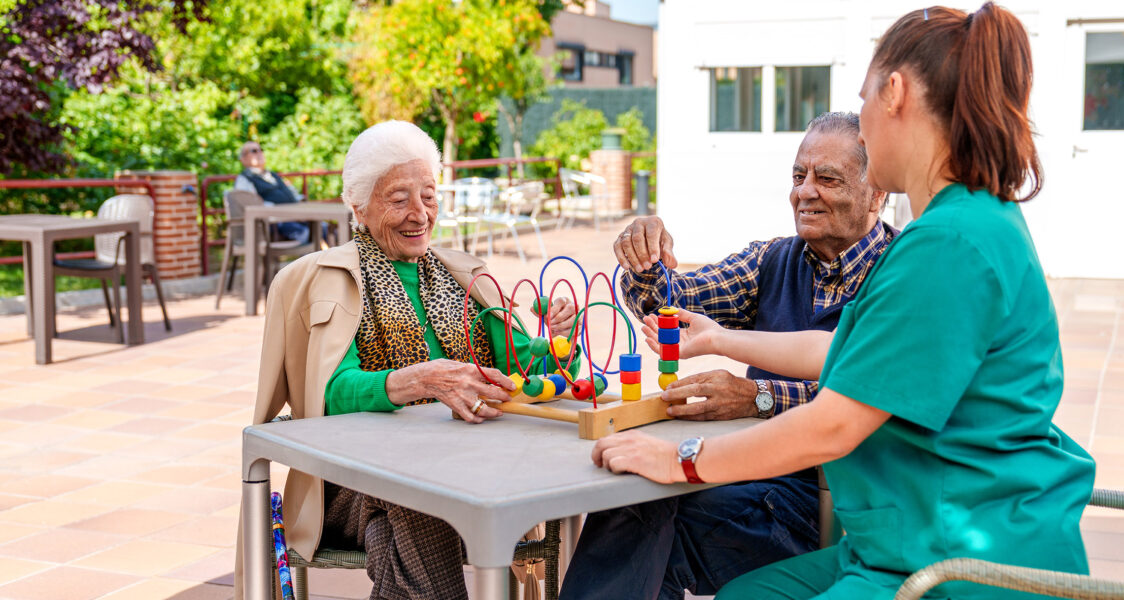Navigating the Transition to Assisted Living
Transitioning to assisted living marks a significant change for older adults and their family members. This move often comes at a time when more support and care are necessary, making the choice of the right community an important decision. An informed choice can greatly affect one's quality of life, highlighting the need for thorough research and understanding of what each community offers. With a variety of living options, social events, and care levels available, finding a community that aligns with individual needs and preferences is key to fostering a fulfilling and vibrant life for residents.

Transitioning to Assisted Living
Transitioning to assisted living marks a significant change for older adults and their family members. This move often comes at a time when more support and care are necessary, making the choice of the right community an important decision. An informed choice can greatly affect one’s quality of life, highlighting the need for thorough research and understanding of what each community offers. With a variety of living options, social events, and care levels available, finding a community that aligns with individual needs and preferences is key to fostering a fulfilling and vibrant life for residents.
Recognizing the Need for Assisted Living
Knowing When To Move From Independent To Assisted Living
Recognizing the right time to move from independent living to assisted living involves observing changes in your loved one’s capabilities. Do they struggle to manage daily tasks? Increased difficulty with activities like cooking, cleaning, and personal care are clear signs your loved one may need more support. Missed appointments, social withdrawals, and frequent forgetfulness or safety concerns may indicate it’s time to consider the more supportive environment that an assisted living community can provide.
The Difference Between Independent Living and Assisted Living
Independent living is suitable for seniors who can manage on their own but enjoy community life. Assisted living goes further, offering hands-on support with personal care, medication management, and activities of daily living in a community that emphasizes health and social engagement.
How to Discuss the Transition with Your Loved One
Talking about moving to an assisted living community requires openness, empathy, and honesty. Start the conversation early. Acknowledge your loved one’s feelings and concerns, offer reassurance about the benefits of assisted living, such as increased social opportunities and personalized care, and highlight how their quality of life will improve in a supportive community. Highlight the aspects of safety, community, and available support and reassure them of their involvement in the decision-making process.
“The transition to assisted living is a season of adjustment, not just for the seniors moving but also for their families. Embrace this change with an open heart, knowing it’s a step towards ensuring safety, care, and a vibrant community life for your loved one.”
Choosing the Right Assisted Living Community
What to Look for in a Quality Assisted Living Community
When choosing a high-quality assisted living community, look beyond the surface. Pay attention to how the staff and care team interact with residents; these interactions should be warm and respectful. Notice if residents seem engaged and content. The environment should be clean, safe, and inviting, with accessible outdoor spaces. A quality assisted living community offers a rich schedule of activities that cater to a wide range of interests and abilities and offer residents opportunities to stay active and connected.
Questions to Ask During Your Visit
Prepare a list of questions that cover staff qualifications, resident satisfaction, and the availability of medical support. Ask how the community tailors senior care to individual needs and how often care plans are reviewed. Inquire about the dining experience and ask for details about meal options, nutritional values, and flexibility in meal times. It’s also wise to ask about the protocols for emergencies and how the community communicates with families.
Understanding Assisted Living Costs
Diving into the details of assisted living costs is essential. Request a detailed breakdown of monthly fees, including what is and isn’t covered. Ask about additional charges that could arise and how the community handles specialized care and increases in care levels. Explore any available financial assistance programs and whether the community accepts insurance or veteran benefits. Understanding these factors upfront will help you plan for the future and select a community that fits your financial situation.
Preparing for the Move
Use A Checklist for a Smooth Transition
Embarking on the move to assisted living involves careful planning. Start with a comprehensive checklist that addresses all facets of the move. This includes sorting personal items, finalizing paperwork, and setting up the new living area. Each step should be thoughtfully planned out to make the transition as seamless as possible, from arranging transportation for moving day to ensuring utilities are set up in the new home.
Organizing and Downsizing Belongings
Downsizing for the move can be a significant undertaking. Prioritize items that are necessary and hold sentimental value, and consider donating or selling those that are not essential. Utilize this opportunity to reminisce and share stories about special items. Organizing belongings not only simplifies the move but also helps in creating a personalized and comforting space in the new community.
Handling the Emotional Aspects of Moving
Moving can stir a mix of emotions. Engage in open and honest conversations with your loved one about their feelings and concerns. Validate their feelings while highlighting the positive aspects of the new community, like enhanced safety, opportunities for social engagement, and access to care. Encourage them to see this as a step towards a new chapter filled with community support and new friendships, making the transition smoother and more positive.
The First Week in Assisted Living
Helping Your Loved One Adjust
During the initial week, it’s vital to spend time helping your loved one get accustomed to their new environment. Introduce them to their neighbors and the community staff who will be a part of their daily life. Help them arrange furniture and set up their living space with cherished belongings to make the new setting feel more like home. This personal touch encourages a sense of comfort and belonging.
Staying Engaged with Community Activities
Assisted living communities offer a rich calendar of events tailored to diverse interests. Early involvement in these activities can play a significant role in your loved one’s adjustment. Whether it’s a craft workshop, a movie night, or a gentle fitness class, participating in these gatherings promotes social interaction and integration into the community fabric.
Building Relationships with Staff and Residents
Creating connections with both staff and other residents is essential for a smooth transition. Encourage your loved one to share meals in the dining room, where they can interact with others in a natural, social setting. Friendly conversations with staff also help build trust and a feeling of security. These early relationships set the foundation for a supportive and enriching living experience in their new home.
Long-Term Adjustment to Assisted Living
As residents settle into assisted living, fostering a sense of independence becomes key. Encouraging them to make personal choices, from their daily activities to meal selections, enhances their sense of autonomy. Communities can support this by providing varied options that cater to individual preferences and abilities.
Monitoring the well-being of loved ones in these communities involves regular communication with staff. By engaging in discussions about care plans and personal progress, families can ensure their loved ones are receiving personalized attention that meets their evolving needs.
Maintaining frequent contact through visits, calls, and ohter technology helps sustain strong bonds. This consistent presence reassures residents, making them feel connected and integral to their family circle. Senior living communities encourage this connection by organizing family-friendly events and making communication tools readily available.
In essence, the long-term adjustment to assisted living thrives on a balance of independence, personalized care, and robust family involvement. This holistic approach enriches the living experience for residents, making their transition smoother and more fulfilling.
Closing Thoughts
Transitioning to assisted living marks a significant step for seniors and their families, aiming to enhance quality of life through supportive care and community engagement. Success hinges on recognizing when additional support becomes necessary, choosing a community that aligns with personal needs and values, and preparing both emotionally and practically for the move. Effective communication, involving your loved one in decision-making, and focusing on the benefits of new social and recreational opportunities can ease this transition. Engaging with the chosen community’s activities, fostering relationships with its members and staff, and staying involved in care plans are key to ensuring a positive experience in this new chapter.
About Koelsch Communities
Since 1958, Koelsch Communities has dedicated itself to enhancing the lives of older adults through our comprehensive senior living options. With a focus on individual needs, our communities offer a blend of care, comfort, and quality that ensures each resident feels at home and valued. Our highly skilled and compassionate team stands ready to provide personalized attention that respects the dignity and preferences of everyone we serve. We take pride in our history of high customer satisfaction and our commitment to excellence and the well-being of our residents.









